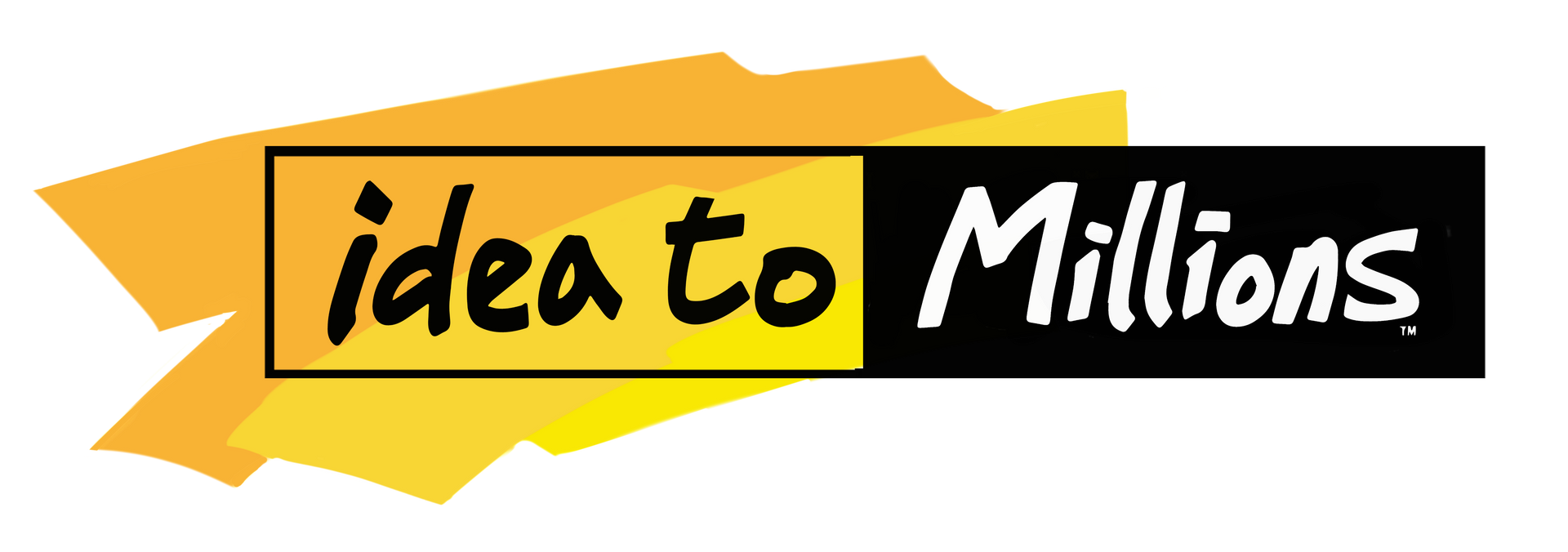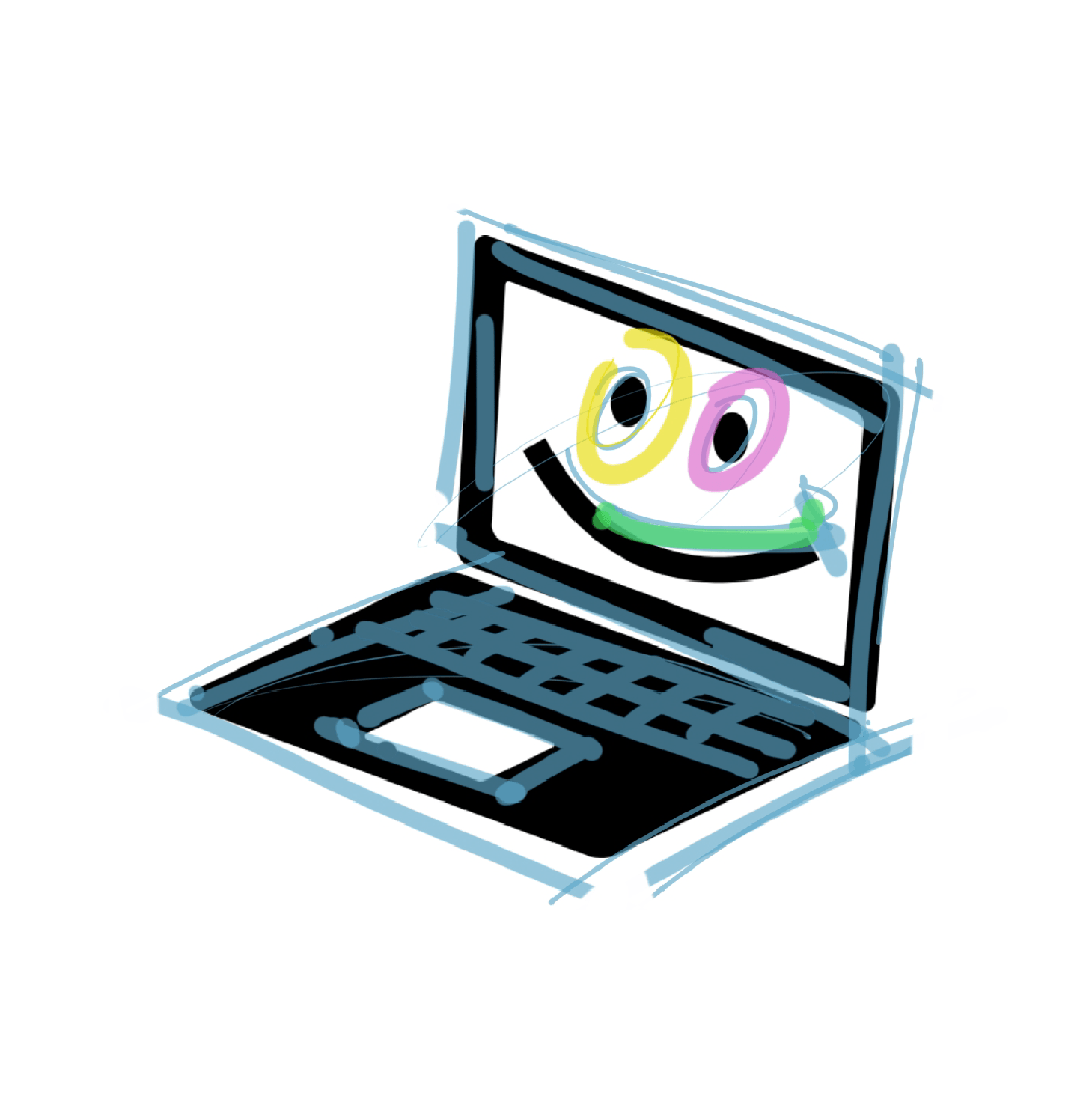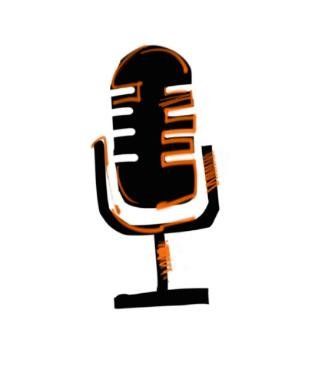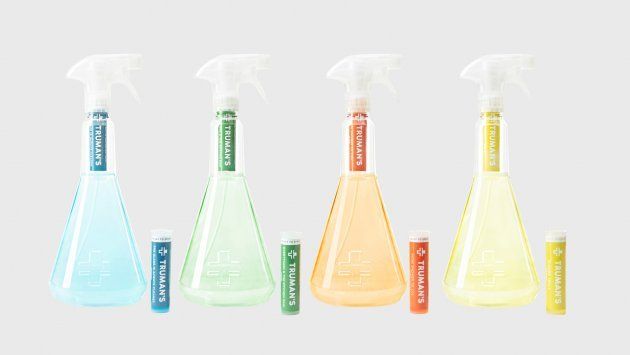There are a lot of youngsters who cannot get into a job as they are not old enough for that but they wish to earn their own money.
For them here are a few questions which they need to reply to themselves.
1. Are you determined enough to earn money with your own labor?
2. Do you wish to b your own boss when you earn money?
If the answer to the above questions is in affirmation then you have the quality to be an entrepreneur who can definitely succeed. To start a business, you need to have an idea for it and the zeal to earn money on your own. Along with this, your goal must be to be the boss. These are seeds for the tree that make you a successful entrepreneur.
Here are a few ideas that can guide you to be teen entrepreneur. It is one of the toughest attempts that one can go ahead with to try the entrepreneurship. One ought to think carefully. You have to determine yourself on what sort of an entrepreneurship you can handle with success.
Also, what you like to do and what all catches, your attention the most. Which is the field you have most knowledge about? The answers to these questions will lead you to the ideas of your business. Along with this you also ought to commit yourself to business to make it a success.
Ideas for Teen Entrepreneurship
It is not always true that a teen cannot get the ideas for a business. To get an idea for the business you only need to think ingeniously and productively. Along with this search for the best solutions to the problems in the present time and keep and keep an eye on the changing trends.
You can also ask people in the family and amongst your friends or search in books or ask your mentors for the ideas. Try your best to find out all the pros and cons of the business that you wish to take up. The basic thing that needs to be clearly understood is that business is exchange. Also, you need to understand the law of demand and supply. This law goes along at every level.
What is the next step after the idea?
When you get the idea think that whether it is practical or not? This must be such which people notice. Some or the other kind of need must be satisfied to make the idea work. You must determine whether you can bring the idea to floor or not? If the demand is not there it can be created. Arrange for the finance, which is the most important thing. Before you finalize on starting the business you must get the solutions to all the things discussed here.
A couple of the ideas for teen entrepreneurs:
1. Make decorative candles, which are useful as well as items for decorations. The material is cheap and easily available.
2. You can provide the service like taking the pets out or buying the groceries or washing car.
8 Best Industries for Youngster Starting a Business in 2020
Here are the hot sectors with the promising opportunities for entrepreneurs this year.
When you're considering starting your own business, one of the first questions to ask yourself is: Does my company fulfill an actual market need? Success as an entrepreneur requires bringing solutions to market, and too many startups today are really just solutions in search of a problem.
For aspiring entrepreneurs, Inc.'s 2020 Best Industries report, a list of the best industries for starting a business, serves as a roadmap for finding the most promising opportunities. Every year, we speak with industry experts and crunch the latest data to identify areas of the economy that are primed for new entrants. Read on to see which sectors are welcoming tomorrow's fastest-growing startups.
Clean Water Services
No one can afford to ignore the safety of our most precious natural resource: water. Managing and monitoring drinking water quality is a significant opportunity for entrepreneurs who can protect public health by delivering solutions at scale. Companies in this sector are also working on developing new sources of drinkable water.
Why it's growing:
The water crisis in Flint, Michigan, has raised awareness about the harmful effects of contaminants, making water filtration an important issue for consumers and enterprises across the U.S.
Barriers to entry:
Building systems that connect water testing hardware and software can require significant investment.
The downside:
Companies working on clean water initiatives have not been popular investment targets for venture capitalists.
Competition: Xylem and Danaher are public companies with multiple brands in the clean water sector. Zero Mass Water, backed by Bill Gates's billion-dollar Breakthrough Energy Ventures, created a $2,000 solar panel that draws drinkable water out of thin air.
Forecast:
Investment in U.S. companies addressing declining water quality has grown 25 percent to $50.7 million in the past five years, according to data and research company PitchBook.
Look inside the clean water services industry:
This Founder Couldn't Find an Affordable Way to Test Drinking Water After the Flint Crisis, so She Created One
Gender-Neutral Personal Care
Gone are the days when personal-care products were categorized as "beauty" for women and "grooming" for men. A growing group of startups are now making moisturizers, deodorants, shampoos, fragrances, and other products that lead with their ingredient lists and don't target a particular gender.
Why it's growing:
Many consumers, especially younger ones, are rejecting traditionally gendered products in favor of nonbinary options. More men are also embracing skin care regimens and following other wellness trends.
Barriers to entry:
It's easier than ever to develop a product and start selling it online, says Larissa Jensen, vice president and beauty industry adviser at market research firm NPD Group. Customers are willing to try new things and aren't loyal to established brands. But with so many companies in the industry, you'll have to do more to stand out.
The downside:
Distribution can be a challenge. High-end specialty stores that spotlight gender-neutral brands are a growing segment of the market, but have limited reach, while larger cosmetics retailers and department stores remain very gendered. Customer concerns about sustainability and skin-irritating synthetic ingredients are also driving demand for "clean" formulas and eco-friendly packaging, which can be expensive to develop.
Competition:
Not only are new "indie" personal-care brands popping up every year, but large consumer-goods companies and luxury brands like Lululemon and Gucci are increasingly offering gender-neutral options as well. Aesop and Deciem (the parent company of skincare brand the Ordinary) are two of the most prominent companies that market their products, including moisturizers and face oils, based on ingredient formulas rather than gender.
Forecast:
Market researcher CB Insights named "expanding inclusive beauty" among the industry trends with significant momentum in 2020, and noted that men's and gender-neutral personal-care products are both growing sectors. The pending billion-dollar acquisition of men's shaving startup Harry's and billion-dollar deal for Dollar Shave Club, the latter of which has shifted to gender-neutral marketing, offered early evidence of the industry's growth.
Look inside the gender-neutral personal care industry:
In the Beauty Industry, Gender-Neutral Is the Next Big Thing. This Startup's Success Shows Wh
Gun Violence Prevention
In the wake of mass shootings, businesses, schools, and other organizations are investing in security consultants and technology to help them prepare for the unthinkable. Companies in this industry provide employee training and surveillance tools and work with organizations to develop policies to prevent--and, if necessary, respond to--violent incidents.
Why it's growing:
There were 417 mass shootings in the U.S. in 2019, according to the nonprofit Gun Violence Archive. In a 2019 survey by the Society of Human Resource Management, nearly half of HR professionals said their organization had experienced a workplace-violence incident, and half of those said an incident had occurred within the past year. These tragedies can happen anywhere, so a wide variety of organizations are turning to outside firms for guidance.
Barriers to entry:
Businesses must make sure the policies they develop are compliant with state and local laws regarding surveillance, weapons possession, and profiling, as well as HR regulations, according to Matthew Doherty, senior vice president of threat and risk management at Hillard Heintze, a risk-management consulting firm. Many founders in this industry have military or law-enforcement backgrounds, but that's not sufficient for a well-rounded operation, Doherty cautions. It's important to find your niche and then hire for the skills you don't have, whether that's technical security experts, intelligence analysts, engineers, or even psychologists. "Don't purport yourself to be an expert on everything," he says.
The downside:
Gun violence is a sensitive topic, and it can take time and effort to build relationships with clients. There's also disagreement about best practices in this emerging industry: There is little independent research to show that any particular security measure is effective in reducing gun deaths or injuries, while there is evidence that active-shooter drills can be traumatic. Liability can be an issue, too, if participants are injured during drills or if security firms run afoul of regulations.
Competition:
As high-profile shootings spur more conversation about safety measures, expect more existing security consultancies to shift their focus to active-shooter training, and equipment vendors to start pushing products like reinforced doors, panic buttons, and cutting-edge surveillance systems. The Alice Training Institute, founded in 2000 after the Columbine shooting, is the country's most prominent for-profit provider of active-shooter training. Startups have also proliferated in the industry; Tomahawk Strategic Solutions, which runs active-shooter drills and sells equipment to law enforcement, brought in $2.8 million in revenue in 2018.
Forecast:
There are few statistics that encompass the entire industry, but market research firm IHS Markit estimates the U.S. market for security equipment and services for educational institutions--things like surveillance cameras, high-security doors, and metal detectors--will grow to $3.2 billion in 2022, from $2.5 billion in 2017. A 2019 Wall Street Journal survey of 800 small businesses found that 35 percent of business owners have taken steps to prevent workplace violence or plan to do so.
Healthier Junk Foods
Healthy diets are all the rage, but Americans still crave chips and cookies. As a result, companies are inventing new kinds of packaged foods made with minimally processed fruits and vegetables, as well as snacks that mimic the taste and texture of popular junk foods but have fewer calories and artificial ingredients.
Why it's growing:
Health-conscious consumers are seeking out better-for-you versions of their favorite snacks. Some consumers assume products labeled with terms like "vegan" and "sugar-free" don't taste as good as ones packed with salt, fat, and sugar, so startups are aiming to strike a new balance between indulgence and health.
Barriers to entry:
Businesses in this industry face many of the same hurdles as those in any packaged-food sector, including acquiring sufficient startup capital for manufacturing and product development, finding distributors, managing logistics, and meeting FDA and other regulations.
The downside:
Competition is fierce for shelf space at national grocery chains like Whole Foods. The biggest snack-food producers, which have a firm foothold in the market and are able to keep their prices down, are increasingly diversifying their offerings with healthier options.
Competition:
Aside from the many smaller companies making less-processed healthy snacks like dried fruit and kale chips, startups in this industry will have to take on big brands like General Mills-owned Annie's, whose products include organic alternatives to Cheez-Its and Chex Mix. "Low-calorie products from large brands have grown at a much faster rate than high-calorie products over the past decade," according to IBISWorld. Up-and-coming brands include Peatos, which makes a crunchy Cheetos alternative using pea protein, and Snacklins, which offers a meatless pork rind made with mushrooms, onions, and yuca.
Forecast:
In the U.S., snack food production is a growing category that was valued at $43 billion in 2019, according to IBISWorld. Healthier snacks are driving much of that growth, as Millennial consumers boost demand for lower-calorie, organic, and gluten-free options.
Look inside the healthier junk foods industry:
Meet the Tiny Food Company That's Taking on Doritos, 1 Vegan Pork Rind at a Time
Next-Wave Logistics
Third-party logistics companies only recently began crunching data to drive greater efficiencies. The industry's increased reliance on automation has helped create opportunities for software companies that can match shippers with trucks and optimize the movement of freight, among other services.
Why it's growing:
Truckers are producing more and more data on driving time, miles driven, and engine performance, which digital freight brokerages can use in conjunction with sophisticated GPS systems. Plus, a 2016 federal law required many commercial vehicles to electronically log data about their operations.
Barriers to entry:
Attracting engineers to the comparatively unsexy logistics industry is a significant challenge.
The downside:
Compared with the $86.5 billion overall freight brokerage market, the market for bolt-on software is small: Supply-chain consultancy Armstrong & Associates estimates it at $3.2 billion.
Competition:
FourKites, Project 44, and MacroPoint allow shippers, brokers, and carriers to track products in transit, while HubTran and Triumph Pay focus on automating freight brokers' back offices. Uber Freight and Convoy are also large players in third-party logistics.
Forecast:
U.S. freight industry revenue is expected to increase 54 percent to $1.6 trillion by 2030, while overall freight tonnage is expected to grow 26 percent to $20.6 billion, according to the American Trucking Associations.
Look inside the next-wave logistics industry:
How This 9-Employee A.I. Startup Helps Keep 36 Million Trucks Loaded Up and Rolling Smoothly
Pet Wearables
Health and wellness monitoring devices are not just for humans. Growing awareness about pets' physical and mental health is driving demand for wellness data on animals, while GPS tracking devices are becoming increasingly popular.
Why it's growing:
U.S. pet care spending in 2018 reached a record high of $72.6 billion, according to the American Pet Products Association.
Barriers to entry:
Since it's still a nascent industry, the barriers to entry are low relative to many other consumer electronics categories.
The downside:
Wearables represent just a small segment of the overall pet care category. Other products competing for consumers' dollars include beds, collars, leashes, toys, travel items, clothing and other accessories.
Competition:
Whistle and FitBark focus on dog health and location trackers, while Garmin and Motorola offer a variety of products that aid in dog tracking and training.
Forecast:
The global pet wearables market is expected to grow to $1.7 billion in 2024 from $703 million in 2019, according to data from research firm MarketsandMarkets.
Look inside the pet wearables industry:
Pet Wearables Are a Thing Now. Meet the Company That Wants to Collect Your Dog's Data
Case study
Pet Wearables Are a Thing Now. Meet the Company That Wants to Collect Your Dog's Data
Whistle's wearable devices help keep dogs in optimal health by monitoring their activities and crunching the data in real time.
In February 2017, Donovan got lost during a trip to the park. The skittish rescue dog's owner Collette Bunton spent hours frantically searching before the rat terrier mix finally found his own way home. To make sure her beloved pet would never get lost again, Bunton did some research on tracking devices, and decided to fit Donovan's collar with a device from a San Francisco-based startup called Whistle.
Fifteen months later, Bunton received a surprise phone call from Whistle: Want to be our CEO? "You probably don't know us very well," said co-founder Ben Jacobs, the voice on the other end. Bunton, a former Roku and Logitech executive, could only laugh: "I know you, and I have ideas on what kind of things we could do."
With Bunton at the helm, Whistle has become a leader in the fast-growing pet wearables industry by rapidly improving its technology for monitoring customers' furry friends. Its flagship product line of Whistle Go devices--think of them as doggy Fitbits with cellular data-enabled location tracking--used to simply report a pet's location and number of miles walked per day. Now, that data gets crunched in real time to notify you through a smartphone app when subtle changes, like decreased activity or increased scratching, could indicate a health problem.
"You can, today, do things that you couldn't do six months ago," Bunton says. "There really is a true technology and use case inflection point that's happening."
Whistle's devices cost between $100 and $130, plus a subscription fee. Whistle declined to disclose specific revenue figures, but says it has seen consistent double-digit revenue growth rates since its launch eight years ago. Business intelligence platforms Owler and ZoomInfo estimate Whistle's annual revenue at $30 million and $38.9 million, respectively.
Developments like longer-lasting batteries and 5G technology have sped advances in pet wearables, according to Ross Rubin, founder and principle analyst at consulting firm Reticle Research. The next step, he says, will be to more heavily saturate the market with affordable products: "It's just a question of finding the right combination of cost and functionality."
The pet wearables market--which includes GPS and fitness trackers, cameras, and smart clothing--is expected to grow to $1.7 billion in 2024 from $703 million in 2019, according to data from research firm MarketsandMarkets, and Whistle estimates that more than a million devices have been sold industry-wide to date.
Striving for customization
Whistle was founded in 2012 by Jacobs, fellow ex-Bain consultant Steven Eidelman, and software engineer Kevin Lloyd. Growing up, Jacobs had a German shepherd named Bear who seemed perfectly healthy, but just days later had to be put down due to intestinal twisting. The founders' idea centered not around pet tracking, but on monitoring canine activity for predictive health, which could have caught Bear's issue sooner.
The startup attracted talent from companies like Apple and Google and grew thanks to more than $20 million in venture capital funding--until 2016, when it was acquired by Mars Petcare for $117 million. Jacobs credits Mars, Inc.--one of the largest privately owned companies in the U.S.--for allowing Whistle to continue operating independently under its new corporate umbrella.
Between 2017 and 2019, the three co-founders left the company. Eidelman and Lloyd departed for other startups, and Jacobs became head of ventures and partnerships for Kinship, Mars's pet-focused startup accelerator and $100 million venture fund. Enter Bunton, who had run Roku's devices department as a senior vice president and general manager from 2012 to 2014. Upon joining Whistle in June 2018, Bunton immediately set about shifting the company's ethos to prepare for the industry's anticipated growth.
Strategically, that involved amping up services like data collection and analysis, in addition to the company's focus on hardware. For example: Whistle's Pet Insight Project, in which dog owners receive the company's newest product, a Whistle Fit, for free in return for access to that device's activity, calorie burn, and mileage data. Whistle has collected data from more than 60,000 dogs across 900-plus different breeds and mixes, which Bunton hopes will ultimately enable the app to give individualized health recommendations for every dog. "Even in my house, what my other dog, Monster, needs and what Donovan needs are different," she says.
Bunton is keenly aware of the stigma associated with data collection, and says Whistle's largely Millennial staff of about 60 employees (and eight dogs) constantly weighs in on moral and ethical considerations of issues facing the business. "It's [about] getting clearer vision on the things that matter to our users," she adds. "And you do that through the personal information that they're willing to share with you."
A competitive pack
Whistle says it's "fast approaching" a majority of the industry's market share by units sold. (The company declined to provide unit sales figures.) Still, it faces stiff competition from startups like Kansas City, Missouri-based FitBark, founded in 2013, as well as larger companies like Garmin and Motorola, which both sell pet-monitoring devices and boast financial heft on par with Mars.
Bunton says Whistle aims to lead the pack by focusing on personalization, offering advice tailored for individual dog owners. That could include new products, features, and significant partnerships with dog-walking and other pet-service businesses like Rover.com and Wag. "Our biggest challenge is really one of awareness--that it's a real, usable product and not a fun gadget," Bunton says. "That's a thing that takes time, and I'm not known to be the most patient woman in the world."
Space Technology
America's private space industry is booming thanks to the declining costs of sending rockets to space and the increasing availability of launch vehicles. Advances in commercial electronics have enabled even hobbyists and high-school students to build small satellites that have reached orbit. While the U.S. government is one of the world's largest procurers of satellite data, Earth imagery taken by satellites will soon be in high demand from farmers, first responders, and scientists.
Why it's growing:
The rise of companies like SpaceX and Blue Origin have helped bring the number of global rocket launches to around 100 per year, while demand has grown for increasingly high-resolution satellite imagery.
Barriers to entry:
While launch prices but are coming down, hitching a ride on any rocket remains an expensive proposition.
The downside:
Launch failure is a significant risk for every launch vehicle, regardless of past performance.
Competition:
U.S. companies focusing on Earth-observation satellites include Capella Space, Planet Labs, and Spire. Among the international competitors are Italy's e-GEOS and Japan's Synspective.
Forecast:
Venture capital investment in space technology companies has grown to $2.27 billion in 2019 from $2.6 million in 2011, according to market data provider PitchBook.
Look inside the space technology industry:
An Ex-NASA Employee Is Launching Satellites Into Space to Predict the Future and Help Save Lives
Sustainable Consumer Goods
It's not just plastic straws: A wave of high-tech startups and innovative consumer-goods brands are developing reusable, recyclable, and compostable alternatives for a range of household products.
Why it's growing:
The escalating climate crisis has prompted a growing consensus that consumers need to end their reliance on plastic. Many U.S. cities and a few states have issued bans or taxes on single-use plastic bags with largely positive effects, and customers are interested in companies that offer either plant-based alternatives to plastic items that are less polluting, or reusable products to help cut down on materials altogether.
Barriers to entry:
The amount of technical expertise required is a major hurdle. Like other big-picture issues related to the changing climate, the sustainability problem can't be solved cheaply or quickly--though, since plastic has so many uses, there are many entry points into the market.
The downside:
Persuading customers who aren't already eco-conscious to choose a pricier item over a cheaper, more convenient one can be difficult. Some biodegradable alternatives also require significant resources and carbon emissions to produce, don't break down as quickly as advertised, and can contribute to pollution if not disposed of properly.
Competition:
Startups helping consumers cut down on plastic include Abeego, which makes a beeswax-coated alternative to plastic cling wrap; Stasher, which makes heat-resistant, dishwasher-safe silicone storage bags; and Truman's, which sells cleaning products in the form of concentrates you mix with water in refillable containers. E6PR makes compostable, turtle-friendly six-pack rings for beer producers, while startups like BioCellection and Kiverdi are developing ways to break down plastic waste and recycle it into new materials.
Forecast:
Bioplastics (made from renewable materials like corn) are a $486 million industry in the U.S. with an annualized revenue growth rate of 2.1 percent between 2014 and 2019, according to market research firm IBISWorld. CB Insights also named the movement away from single-use plastic among its trends to watch in 2020 in the CPG industry.
Look inside the sustainable consumer goods industry:
Your Cleaning Products Have a Climate Change Problem. This Startup Has a Solution
Case Study
Your Cleaning Products Have a Climate Change Problem. This Startup Has a Solution
When Jon Bostock and Alex Reed left their executive roles at Big Ass Fans, they had one criterion for their next venture: The industry had to be boring. Having worked in the ceiling fan business, boring was familiar--and they knew it also offered an opportunity to inject some excitement into said industry.
"We said, if we're going to go do something, let's take a leap," Bostock says. "Let's go solve some pretty significant issues."
Today, the entrepreneurs are co-founders of Truman's, an e-commerce startup they launched in 2018 that's focused on reducing the amount of plastic in household cleaning products. The Louisville, Kentucky-based company sells nontoxic cleaner concentrates that can be mixed with tap water in reusable spray bottles.
Truman's is one of many companies trying to break our addiction to single-use plastics. As people become more aware of their consumption habits--and their impact on climate change--startups have been quick to capitalize. There's everything from reusable tote bag makers like Lotus Trolley Bags to green companies like TerraCycle, which is partnering with retailers through its Loop program to provide reusable containers for a variety of consumer packaged goods. Blueland, which makes a concentrate product similar to Truman's but in tablet form, launched last April.
The U.S. sustainable packaging industry grew to $52.9 billion in 2018 and is expected to reach $77.6 billion in 2027, according to Research and Markets. Fueling this trend are new regulations: Single-use plastic bags have been banned in California and New York, while Maine, Maryland, and a handful of large cities have banned styrofoam containers.
"We think more innovation in this space is ultimately a good thing," Reed says. "If we can collectively move the market in a more sustainable direction, we're achieving our goal."
Reinventing the Spray Bottle
Reed and Bostock's search for an industry to disrupt began in grocery store aisles in 2018. The co-founders noticed that their local store had more than 50 different cleaning products, most of which came in single-use containers. Sensing an opportunity for disruption, they started brainstorming potential solutions. Their research led them to look at sustainability-focused food corporations like Starbucks and Chipotle, where employees would mix jugs of concentrated cleaning solutions with an appropriate amount of water. "It would make no sense for them to ship a product that consists of 98 percent water and uses a lot of plastic," Bostock says. "It's a huge drain on the supply chain."
He and Reed knew making consumers buy jugs of concentrate wasn't realistic, and they didn't want to create potential friction points by making customers do any measuring or mixing. So they partnered with a cleaning company that makes concentrates for commercial spaces to create four formulations: kitchen, bathroom, glass, and floors. Then they designed reusable spray bottles and small concentrate-filled cartridges to fit into them--and only in a certain way, to reduce the chance of customer mistakes. Each cartridge is nontoxic and biodegradable, further reducing the impact on the environment.
Today, a Truman's starter kit, which comes with all four products and their respective spray bottles, costs $22 on the startup's website. Customers have the option to sign up for a subscription service at a discounted rate.
To coincide with its product launch, the startup posted short videos on Twitter, Facebook, and LinkedIn showing how the products work. All got considerable traction, and the company's website received hits from more than 120 countries in the days following. While the company won't disclose revenue or sales numbers, it says it has tens of thousands of subscribers and one-time customers. In September, it closed a $5 million funding round led by Henkel, maker of cleaning brands Dial and Purex.
Not the Traditional Way
Bostock says that Truman's plans on rolling out new products in the next three to six months. It's also considering paths to brick-and-mortar retail, but only if the company can do it in an environmentally conscious way. "We don't want to have a product with a long supply chain where it sits in distribution centers and then sits on the retail shelf and there's no education for the customer in-store," Bostock says. "We're discussing options with retailers, but if it happens, it won't be the traditional way."
Rethinking entire supply chains is an approach environmentalists applaud when it comes to making consumer products more sustainable. "What may be more effective and meaningful to help fight ocean plastic pollution and our waste crisis is to not focus on merely swapping one material for another, but taking a deeper look at how and why we consume products," says Kelly Cramer, director of program management at GreenBlue, a nonprofit dedicated to helping organizations use materials more sustainably. "We hope more and more companies look to concentrates."
Meanwhile, the Truman's co-founders are riding the wave of environmental consciousness, while not positioning themselves specifically as a green company.
"If you build a great green product but only 5 percent of the market cares about it--the very eco-conscious people--then your overall impact is limited," Reed says. "So that's been our approach: We want to make a very positive impact on the environment, but appeal to people who aren't necessarily consciously trying to do that."
©2019, True Stories, "Teen Millionaires"
©2013, TEDx Talks, "The Making of A Young Entrepreneur: Gabrielle Jordan Williams at TEDxRockCreekPark"








